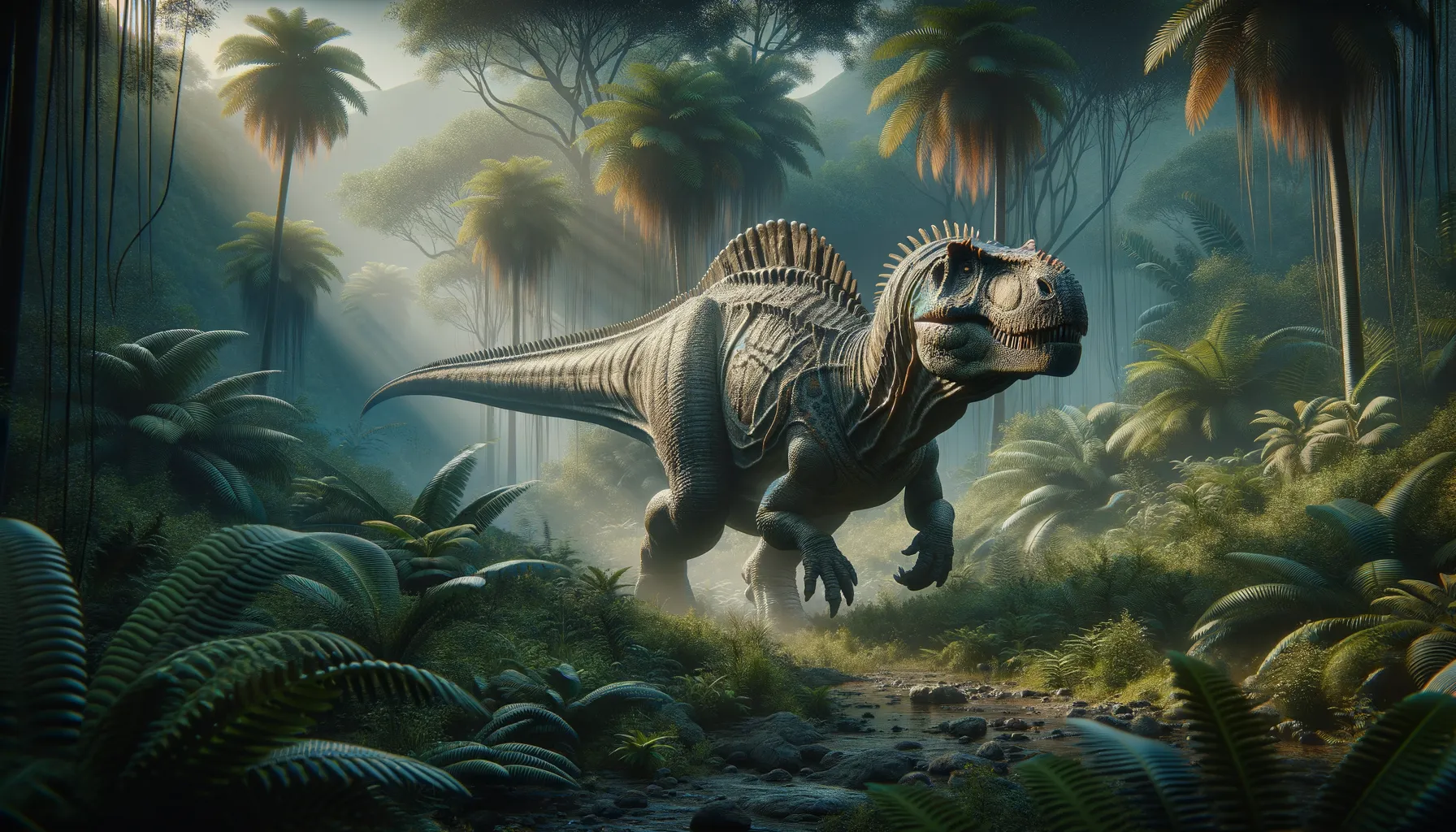
Nodosaurus
Armor-plated survivor of ancient times.
Period
Cretaceous
Length
Measured around 5 meters (16 feet) in length.
Height
Stood about 1.2 meters (4 feet) tall.
Weight
Weighed about 1,000 kg (2,200 lbs).
Nodosaurus was an armored dinosaur that roamed the Earth during the Cretaceous period. Known for its heavy, tank-like build and protective bony plates, it was one of the early members of the ankylosaur family. Its size and formidable armor made it a challenging target for predators, allowing it to graze freely on low-lying vegetation. This herbivorous dinosaur offers insight into the diverse adaptations of dinosaurs to their environments.
Diet
Nodosaurus was a herbivore, primarily feeding on low-lying vegetation, such as ferns and cycads. Its flat teeth were well-suited for grinding plant material, and it likely foraged close to the ground.
Hunting
Nodosaurus did not hunt; as a herbivore, it focused on grazing and browsing for plants. Its main interactions with predators were defensive, relying on its armor for protection.
Environmental challenges
Living during the Cretaceous period, Nodosaurus faced challenges from a changing climate and shifting landscapes. These changes affected the availability of its food sources. Additionally, it had to be vigilant against large predators, which posed a constant threat despite its heavy armor.
Speed
Nodosaurus was relatively slow, relying on its armor for defense.
Lifespan
Estimated to be around 20 to 30 years.
First discovery
First discovered in Wyoming, USA, in 1881.
Fun Facts
- Nodosaurus was a dinosaur that lived about 110 million years ago during the Late Cretaceous period.
- This dinosaur was a plant-eater, munching on low-lying vegetation with its small, leaf-shaped teeth.
- Nodosaurus had bony plates, called osteoderms, embedded in its skin that provided protection from predators.
- Unlike some of its more famous relatives, Nodosaurus did not have a tail club, but its armored body still made it tough to catch.
- Nodosaurus is one of the earliest known ankylosaurs, a group of dinosaurs famous for their armor.
- The name Nodosaurus means 'knobbed lizard', referring to the bony knobs on its back.
- Nodosaurus was relatively small compared to other armored dinosaurs, measuring about 20 feet long.
Growth and Development
Young Nodosaurus likely grew rapidly to increase its chances of survival against predators. As they matured, their bony armor developed, offering better protection. They might have experienced growth spurts, similar to other dinosaurs, as they reached adulthood.
Habitat
Nodosaurus inhabited forested and semi-arid regions where it could find abundant plant life. These areas provided the necessary resources for its herbivorous diet. The forests offered some protection from predators, and the open areas allowed it to travel and graze.
Interaction with other species
Nodosaurus likely coexisted with various herbivorous and carnivorous dinosaurs. While it did not attract much predatory attention due to its armor, competition with other herbivores for food resources would have been a challenge. Social interactions might have been limited, focusing on defense rather than group behaviors.
Natural lifespan
Nodosaurus had a natural lifespan of about 20 to 30 years.
Reproduction
Nodosaurus, like many dinosaurs, reproduced by laying eggs. Nesting sites would have been chosen carefully to protect the eggs from predators and environmental conditions. Parental care post-hatching is not well-documented, but young would need to grow quickly to gain full protective armor.
Social behaviour
Nodosaurus likely led a solitary or small group lifestyle, minimizing social interactions. Its main social behaviors would revolve around mating and possibly shared protective strategies against predators. The armor was a key defense mechanism, reducing the need for group defense tactics.
Fossil locations
Fossils of Nodosaurus have been primarily found in North America, with significant discoveries in Wyoming and Kansas. The distribution of these fossils provides insights into its geographical range during the Cretaceous period. These areas have yielded important fossil records, contributing to our understanding of its structure and life.
